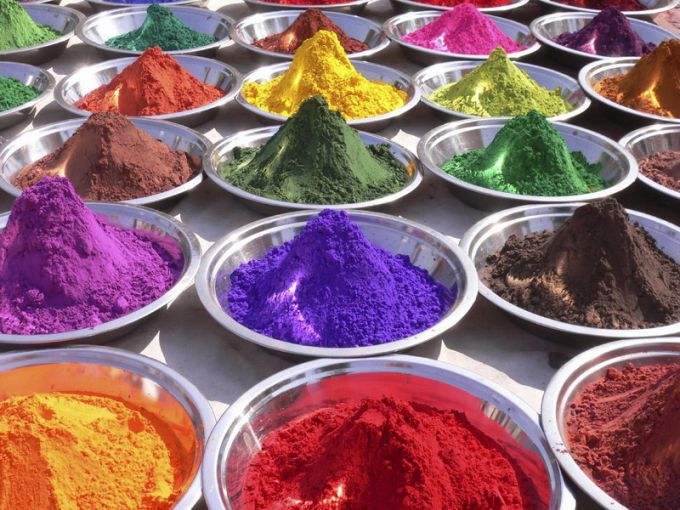The most commonly used colors are:
- white,
- red,
- brown,
- green,
- blue.
An experienced chef is able to create a greater range of colors, but a novice cook is, first and foremost, to understand how to get basic colors.
The white color is produced from the Cretaceous of food powder, previously washed chalk. A special clay, is also in powder form. A simpler, but less quality options will be the use of dairy products or sugar.
The red color can be created from Armenian clay. Sweets red colors and shades are obtained by using juice of barberries, raspberries, cranberries and other berries. Syrups, wine, and even beets will also help to prepare a red dye.
Those wishing to obtain a brown color will suit the present of strong coffee or burnt sugar. To make it easy:
- Tablespoon of sand is placed on the pan.
- The sugar is cooked on high heat to obtain a brown color.
- In burnt sugar poured half a Cup of hot water. The mixture should interfere, to avoid lumps.
- The dark solution should be a sticky consistency. It is filtered and poured into a suitable bottle.
Green derived from spinach: just squeeze the juice manually or meat grinder), add water in proportion 1 to 1 and bring to a boil. If you want to give a green jam, then made a mixture of saffron and Indigo.
In ancient times, a blue dye obtained from certain shellfish. Today, to create a blue color of the starch: it is used as Indigo and Indigo Carmine, forming a solution, in color resembling the sky.
To cook most of the dyes, the novice cook may want to put a lot of effort, but the end result will justify itself. Natural dyes will not harm the body, as it does not contain the chemical constituents.

